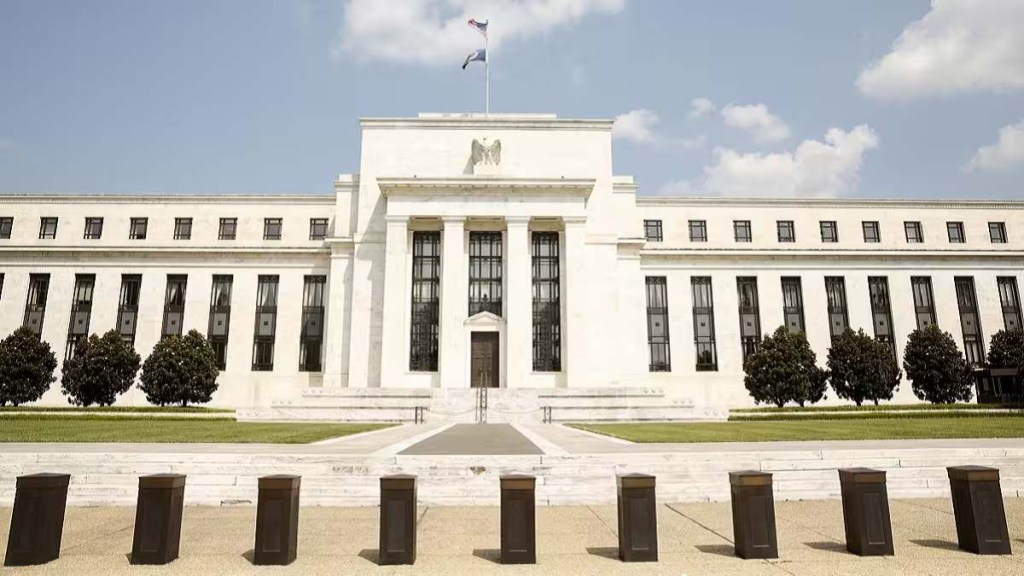– By Gaura Sen Gupta
There has been a sea change in market expectations over the last few months, shifting from expecting a hard landing to rising chances of a soft landing. The change has been driven by growth conditions in the US proving to be resilient and the US consumer seemingly impervious to the rate hikes. The key to the strength of the US growth recovery lies in the fact that the wealth effect continues to support consumption, even though savings have reduced. Household net worth has reduced from the pandemic peak as the Fed aggressively tightened policy but it remains well above pre-pandemic levels at 775 per cent of disposable income in Q2 2023 v/s pre-pandemic levels of 702 per cent in 2019-end. This has allowed consumption to hold-up despite, savings rate falling to the lowest levels since 2008. The net worth remaining above pre-pandemic levels is reflection of housing and equity markets holding-up.
Another factor which has supported consumption is the extremely strong labour market with demand for labour continuing to exceed supply. Before the Fed rate hiking cycle demand for labour exceeded supply by 6mn in the beginning of 2022, reflecting disruption in migration and reduction in labour force participation post Covid-19. It has taken more than a year to reduce this gap to 3mn as of July 2023, with the Fed rate hiking cycle reducing demand for labour and supply improving with rise in labour force participation rate. A large part of the rebalancing in the labour market has been achieved with relatively low cost (or job losses), despite aggressive policy tightening by the Fed.
This combination of growth remaining resilient despite aggressive tightening by the Fed, implies that interest rates are likely to remain higher for longer. The Fed is likely to remain on pause well into the middle of next year with inflation expected to take time to move toward the 2 per cent target. The global rate hiking cycle is drawing to a close with DM central banks pausing or indicating a prolonged pause ahead.
During the rate hiking cycle, currencies were being driven by which central bank will incrementally hike rates and hence focus was more on inflation pressures rather than growth. During the prolonged pause, currencies will be driven by which central bank will be able to keep policy rates higher for longer. Hence increasingly growth differentials have begun to guide the currency markets, reflected in the resurgence of dollar strength.
The Fed rate hiking cycle has been much more aggressive with 525bps hikes since last year, while the RBI hiked the repo rate by 250bps. Despite interest rate differentials between India and US narrowing to fresh lows, the INR has been relatively resilient. In Q1FY24, the INR got support from favourable Balance of Payments dynamics with low crude oil prices and moderate current account deficit. Moreover, FPI inflows had picked-up resulting in a large increase in Q1 Balance of Payment surplus. The INR remained relatively stable during this period with RBI absorbing the dollar inflows.
Conditions changed in Q2FY24 with support from Balance of Payments reducing as trade deficit widened above the US$20bn per month mark and crude oil prices edged-up. Looking ahead, support from Balance of Payments to the INR is likely to remain low in the remainder of FY24. Trade deficit is expected to remain elevated as domestic demand holds-up better than external demand. Crude oil prices which have increased to US$90pb+ are likely to remain elevated with supply-side cuts by crude oil producers. The lower support from Balance of Payments combined with narrowing interest rate differentials between India and US will maintain depreciation pressures on INR. RBI intervention has focused on minimizing volatility and has capped the upward pressure on USDINR. FX reserves remain adequate with the ratio of volatile capital flows (short-term debt plus outstanding portfolio inflows) to FX reserves at 62 per cent, significantly lower than 96 per cent in FY14 which was the taper tantrum period.
We expect USDINR to remain range-bound in the remainder of FY24, against the backdrop of global monetary policy remaining on prolonged pause and RBI intervention minimizing volatility. USDINR trading range till March 2024 is expected to be between 83.50 to 81.50. In the near-term depreciation pressures on INR are likely to be higher with crude oil prices remaining elevated and dollar strength. As we move towards March 2024, USDINR is expected to move towards 81.50, supported by market expectation of Fed rate cuts in FY25. India’s inclusion in JP Morgan EM Bond Index will support FPI inflows into debt in FY25. In FY24, we could see active funds investing in government securities, front-running index inclusion, provided global sentiment for EM government bonds is positive.
(Gaura Sen Gupta is the India Economist at IDFC FIRST Bank.)
(Disclaimer: Views expressed are personal and do not reflect the official position or policy of Financial Express Online. Reproducing this content without permission is prohibited.)
